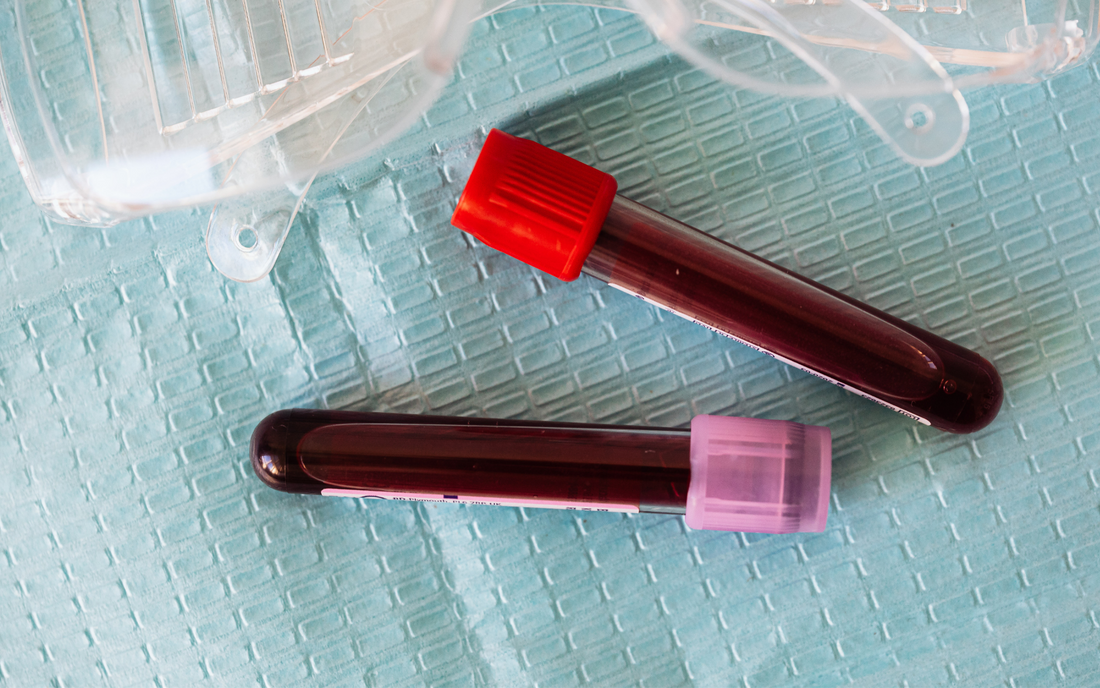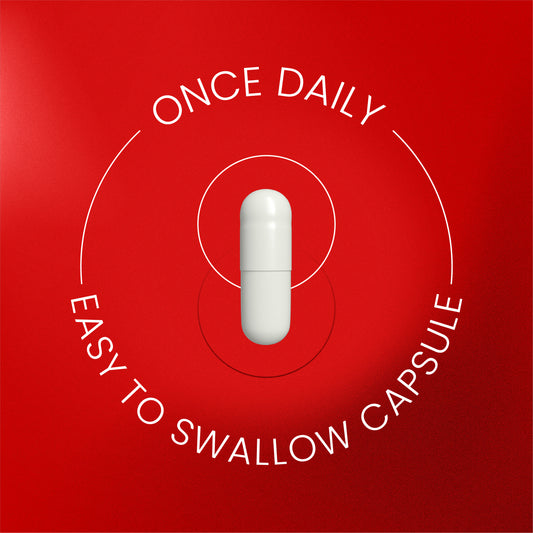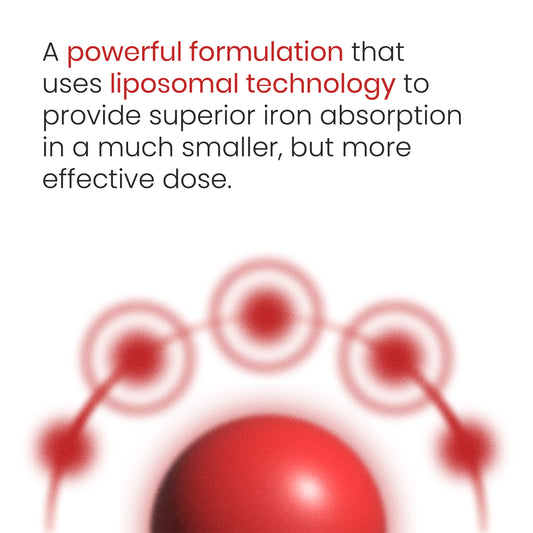

There are so many factors that contribute to your health. It’s like a puzzle that needs every piece in place to function. One of the most important pieces (and most often overlooked) is iron. That’s why it’s so important to get your iron levels checked regularly — and to learn more about how iron tests work.
Sure, getting your iron levels tested might seem like a simple process. But the more you know about the ins and outs, the better you’ll understand your condition, which questions to ask, and how to have an informed conversation with your doctor.
Why is iron so important?
Iron is the nutrient responsible for producing red blood cells that hold hemoglobin — a protein that carries oxygen throughout your body. When your iron levels are low, your body is literally lacking oxygen. In other words, iron is pretty crucial to your overall health.
How often should I be checking my iron levels?
The answer isn’t the same for everybody. The frequency of testing and even the type of iron test you need can depend on how severe your iron deficiency is.
First thing’s first, keep an eye out for common symptoms of iron deficiency. Not sure what they are? We rounded up the top 15 signs that your iron is low in this blog post. If you’re noticing some of these symptoms, it’s a good idea to ask your doctor for an iron test ASAP.
Another time you need to get your iron levels checked? Pregnancy. Pregnant women are at a higher risk for iron deficiency anemia, because they suddenly need enough iron for two. Your doctor might ask you to take multiple iron tests throughout your pregnancy to make sure your levels are healthy.
Once your iron levels have been checked, your doctor will design a treatment plan based on your test results. From this point on, you’ll want to do regular testing to make sure you’re on track. For example, your doctor will typically schedule a follow-up test 6 months after your diagnosis.
And even if none of the above applies to you, it’s a good idea to get your iron levels tested every few years or so. Some signs are easy to miss, and you may be suffering from low iron without even realizing it.
How do you check iron levels?
There are a handful of ways. Your iron levels can be checked, diagnosed, and treated by your primary care doctor or other specialists, like hematologists (blood disease experts) and gastroenterologists (digestive system experts).
First, they’ll ask about your medical history — signs and symptoms of iron deficiency, diet, medications you’re taking, whether you're pregnant, and so on.
Next, they’ll do a physical exam to check for any signs of iron deficiency. This might include pale skin or nails, an irregular heartbeat, uneven breathing in the lungs, or an enlarged liver or spleen.
Even if your medical history and physical exam are both signalling an iron deficiency, the only way to truly know is through a diagnostic test. In other words, a blood sample — usually taken from a vein in your arm using a small needle.
What are the different types of iron tests?
There isn’t one simple blood test that can tell your doctor everything. It sometimes takes a group of tests to put all the pieces together.
Complete Blood Count (CBC)
A CBC test is typically the first test your doctor will order to determine if you have anemia or an iron deficiency. This blood test measures two things: your hemoglobin levels and your hematocrit levels.
- Hemoglobin: the protein that helps your red blood cells carry oxygen through the body.
- Hematocrit: a measure of how much space red blood cells take up in your blood.
If either level is low, that’s a sign of iron deficiency anemia. But the CBC test doesn’t stop there. It also checks for how many white blood cells and platelets are in your blood and how big your red blood cells are. All of these results can tell your doc more about what’s going on in your body.
If the CBC test confirms that you have anemia, there are other tests that can help you understand what’s causing the iron deficiency.
Serum iron test
This test checks how much iron is in your serum — AKA the liquid portion of your blood. It’s often paired with a Total Iron Binding Capacity (TIBC) test, which measures if there is too much or too little iron in your bloodstream, and a ferritin test to check how much iron is stored in your body (i.e. your ferritin levels).
These three tests work together to tell your doctor if you have too much iron or not enough, and most importantly, why. They’ll typically only be ordered if your CBC results come back abnormal.
Other procedures to understand your iron levels
These extra tests can give your doctor more information about your overall iron health.
- Reticulocyte count: the number of new red blood cells in your blood that will soon become fully-formed cells filled with hemoglobin
- Peripheral smear: when a small sample of your blood is examined under a microscope to see if your red blood cells look abnormal in some way (small, pale, etc.)
- Hormone levels: some hormones, like thyroid, can contribute to iron deficiency
- Erythocyte protoporphyrin levels: a chemical that helps produce hemoglobin
What do the test results mean?
After all the tests are complete, your results will tell you whether you have an iron deficiency or iron overload. Both come with their own complications and concerns.
If your iron levels are too low, you might have iron deficiency anemia, another type of anemia, or thalassemia — a genetic disorder that makes it harder for your body to produce red blood cells.
If your iron levels are too high, you might have lead poisoning, liver disease, or hemochromatosis — another disorder that causes iron build-up.
Here’s the good news: most of these conditions can be treated with the right diet and the best iron supplements, or procedures. And remember, if your iron test results aren’t normal, that doesn’t necessarily mean you have a severe medical condition. For example, many women struggle with low iron simply because of blood loss during menstruation.
Will I need to do anything to prepare for my test?
The most common pre-test prep? Fasting. Most doctors will schedule your test for the morning, so that you can fast for at least 12 hours overnight.
Ultimately, the goal is to avoid anything that could impact your normal iron levels. If you recently ate iron-rich foods, took an iron supplement, or had a blood transfusion, it could effect your test results and give your doctor an inaccurate view of your iron needs.
On the other hand, your doctor might ask you to break the rules before a test so that they can measure a certain result. For example, if they think iron absorption is the problem, they might ask you to take an iron supplement right before the test.
When in doubt, ask your doctor what you can do to make sure your iron test is as effective as possible.
Is there a way to check your iron levels at home? Is it safe?
Hoping to avoid a doctor’s office? There are at-home iron testing options available.
Some at-home tests require you to gather a blood sample yourself, typically through a finger prick. Other tests can be ordered online from home, but you’ll still need to visit a blood lab.
An important reminder: some of these tests won’t give you the full picture of your iron health. For example, if the at-home test only checks for ferritin levels, it might not be able to tell you if you have an iron deficiency or not. Plus, at-home blood samples have the potential to be less safe and effective than a secure lab test done by a healthcare professional.
Whether you choose the at-home route or not, you should always talk to your doctor about which test is right for you and what to do next after getting your test results.
What else do I need to know to have an informed conversation with my doctor?
The most important thing is to listen to your body. Learn about the symptoms of iron deficiency and check in with yourself to see where those signs might be showing up. That will help you speak confidently about your symptoms when your doctor asks.
It’s also important to know your options for how to increase your iron intake. That way you have an idea of what questions you might have, what you feel comfortable with, and what you’re curious to try.
Here are a few of the most common ways to up your iron:
- Add more iron-rich foods to your diet, like red meat, poultry, seafood, beans, nuts and seeds, iron-fortified bread, and dark green leafy vegetables.
- Have Vitamin C with your iron to increase absorption rates. For example, drink orange juice with your iron-rich meal.
- IV iron infusions, which are typically required for more severe cases of iron deficiency and anemia
- A high-quality iron supplement
Ferosom Forte is a Liposomal iron supplement with a proprietary LCE Coat™. This coating protects the iron from acid breakdown as it moves through your body, so that more iron can get where it needs to go — and you can skip the painful side effects associated with most iron supplements. The result? An absorption rate similar to certain doses of IV iron.
Plus, Ferosom is infused with Vitamin C for even higher absorption. It also comes in both capsule or sachet form, so you can add it to your favourite beverage if you don’t want to take a pill.
Learn more about how this doctor-recommended supplement can keep your iron levels in check: https://www.ferosomcanada.com/pages/about-ferosom-forte






